Jia Haonan from Aofeisi Quantum Position | Public Account QbitAI
“Elon Musk, do you believe that V2X + AI can make autonomous driving easier to implement?”
Recently, many well-known tech influencers overseas, such as Karl Conrad, Dom Esposito, Shane Starnes, and Jonathan Casey, have been tagging Musk, Waymo, Cruise, and other tech giants under a video showcasing roadside technology for autonomous driving.
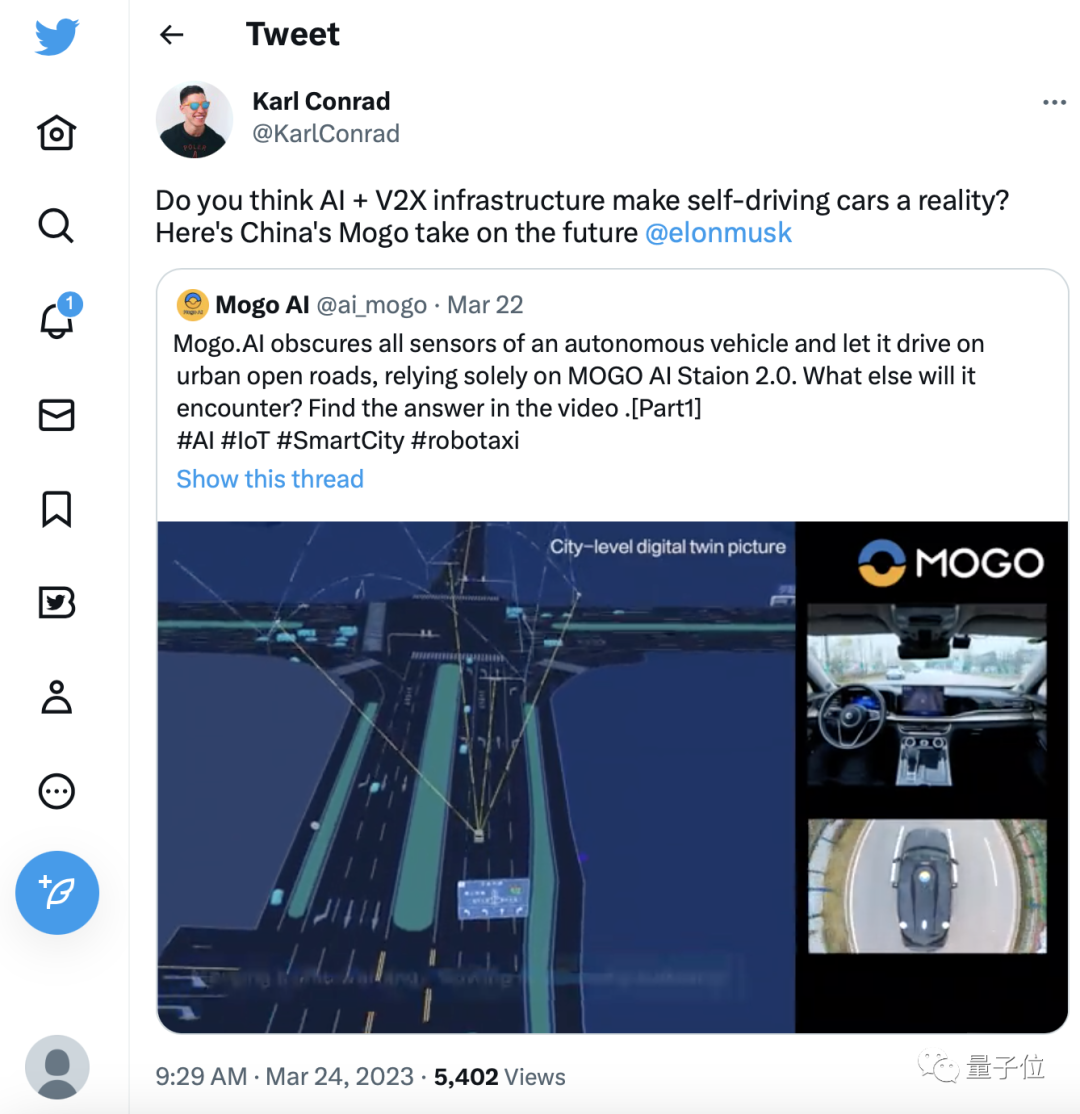
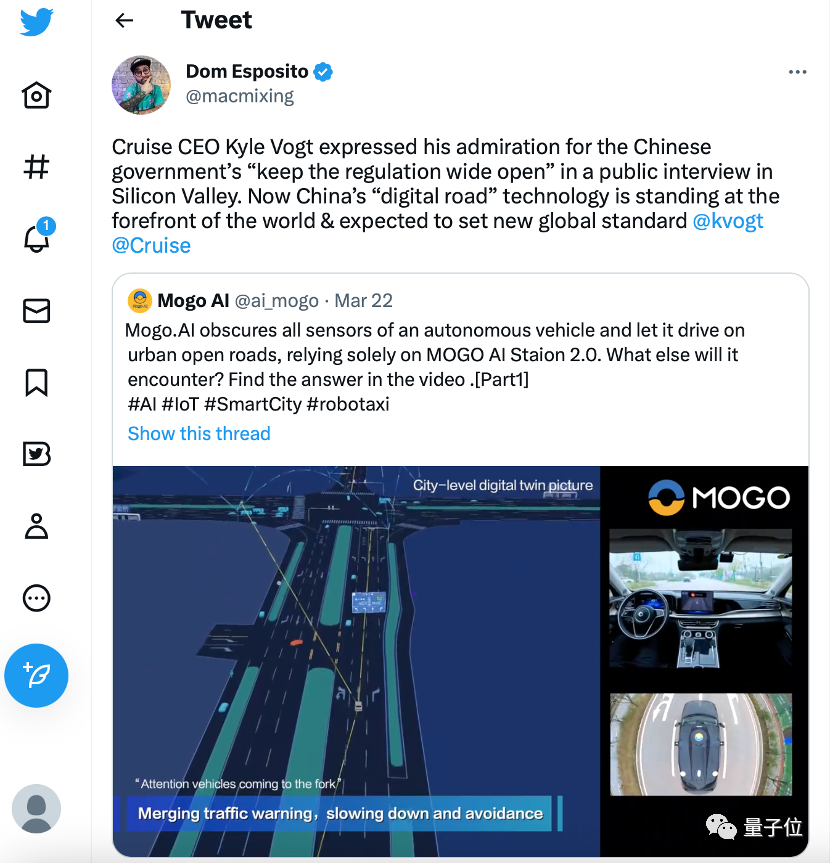
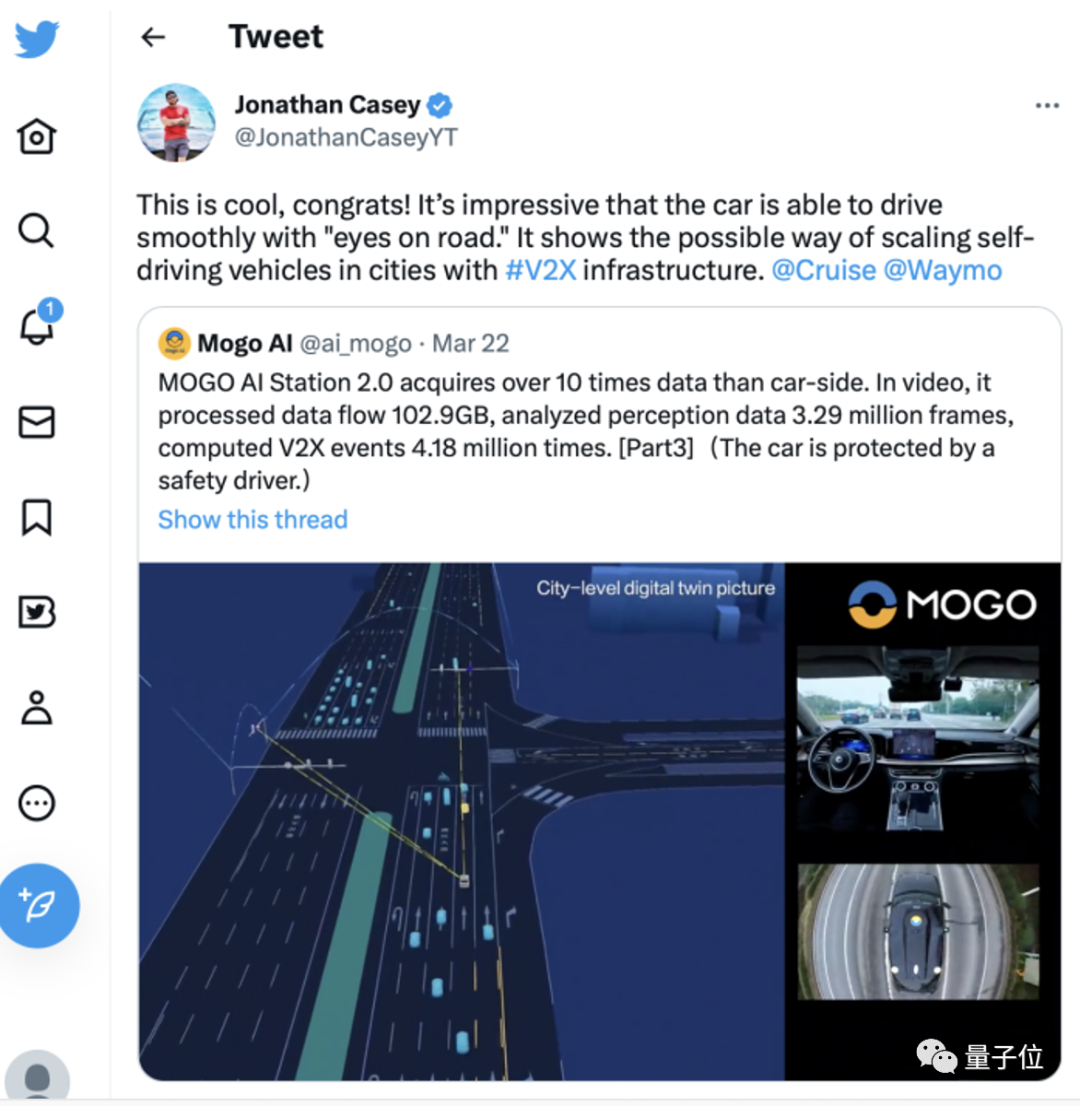
In the video, the autonomous vehicle navigates complex urban roads without any takeover, but that is not the surprising part. What is truly astonishing is that the vehicle in the video completely obscured all onboard sensors. This means that this smart car has essentially become an invisible “blind” vehicle.
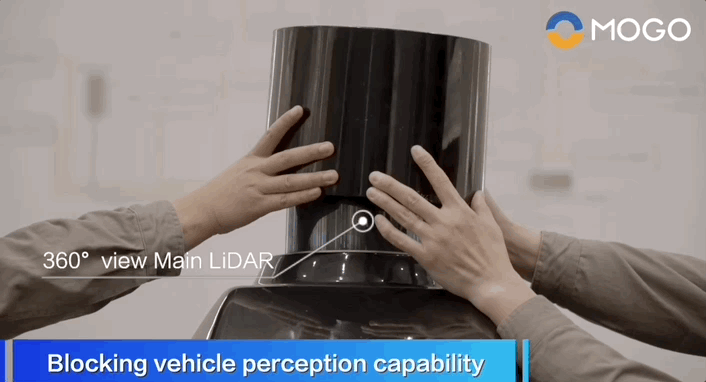
It is noteworthy that achieving L4 level autonomous driving on open urban roads solely through roadside intelligent devices is likely a world first!
The entire autonomous driving process is completed by the Mogo AI Station 2.0, which handles perception, computation, and communication, sending information such as traffic light states, pedestrian warnings, road condition alerts, and front vehicle braking warnings to the vehicle, assisting the smart car in safely executing complex maneuvers like right-of-way negotiations, acceleration, overtaking, and autonomous lane changes.
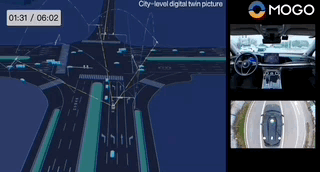
This capability has led many overseas tech KOLs to share the video, exclaiming:
Chinese digital road technology is at the forefront and is likely to set industry standards. The Chinese company Mogo Vehicle Network is making autonomous vehicles a reality through “AI + V2X infrastructure.” This is so cool! In cities with V2X infrastructure, autonomous vehicles are more likely to be deployed on a large scale!
Internationally renowned tech media TechMediaToday and TGDaily also reported on this event on March 27 and 28, respectively.
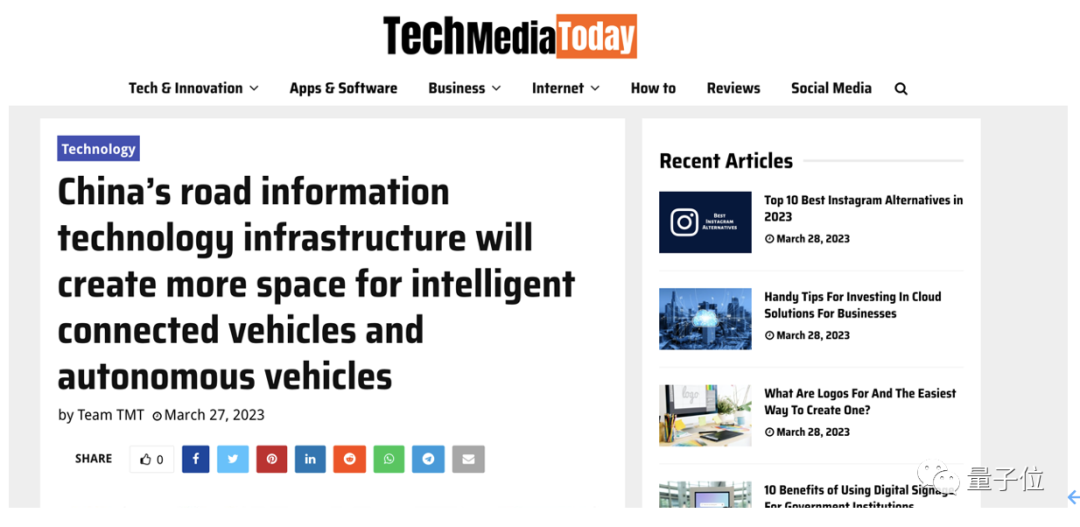
The emerging tech news site TechMediaToday, which has a large young readership, pointed out in its report: “Mogo Vehicle Network is just a microcosm of Chinese tech companies. China’s autonomous driving technology is growing at an incredible speed.”
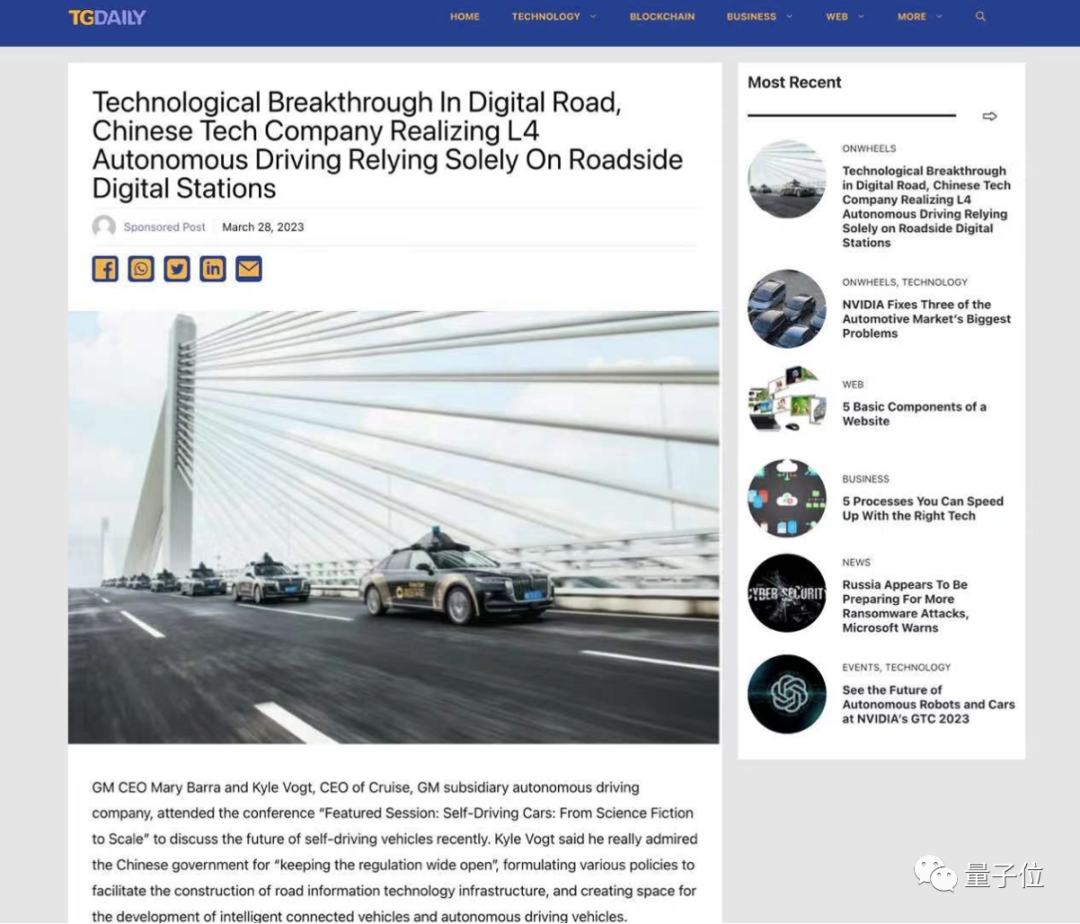
Founded in 1998, the globally recognized tech media TGDaily reported: “Mogo Vehicle Network connects the elements of vehicle, road, and cloud organically, providing more comprehensive traffic information for intelligent connected vehicles, enhancing the safety of autonomous driving.”
What Capabilities Are Demonstrated?
In the video, the vehicle safely completes L4 level autonomous driving tasks on open urban roads while all its sensors are obscured. It navigates through multiple complex scenarios with ease.
For instance, at intersections, the Mogo AI digital station will proactively send traffic light statuses to the vehicle.
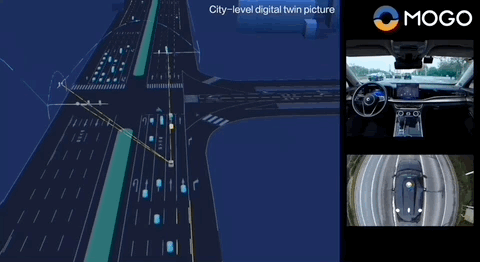
If it were a “traditional” autonomous vehicle, this process would involve the vehicle’s cameras capturing image data, which would then be recognized by algorithms.
However, this time the autonomous vehicle’s cameras are obscured, so the recognition and response to traffic lights are achieved through roadside intelligent devices transmitting the results to the autonomous vehicle.
Similarly, when encountering pedestrians crossing the road, the vehicle will proactively take evasive action:
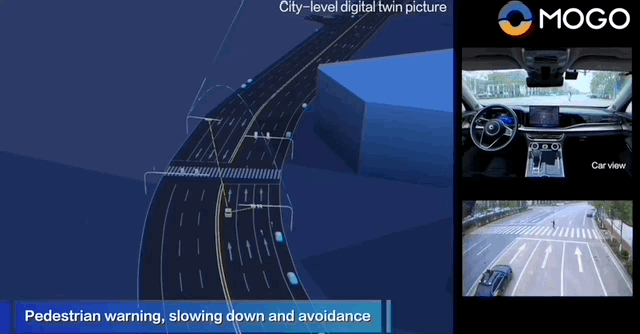
In previous ADAS systems, in addition to image data captured by cameras, data from LiDAR was typically required as a redundant verification for sudden obstacles.
But this time, even the LiDAR on the vehicle is obscured.
By blinding the ADAS and removing its “cane,” the system relies entirely on roadside devices to provide the decision-making data for the vehicle.
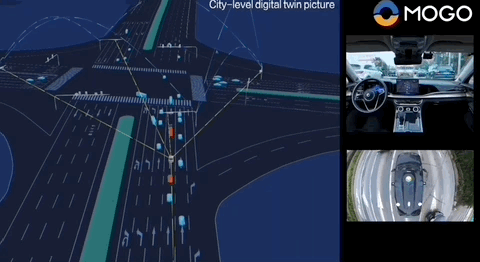
Real-time road conditions, including dynamic targets like vehicles and pedestrians, traffic signs, signals, and sudden incidents like accidents or construction, are perceived, recognized, and calculated by the AI digital road station installed at the roadside, which uses advanced AI algorithms, and then sent to the vehicle.
This means that, in addition to taking evasive actions, this system can also perform more advanced autonomous driving maneuvers.
For example, when facing a slow-moving vehicle, the roadside intelligent station will provide relevant decision-making data to assist the vehicle in proactively changing lanes to overtake:
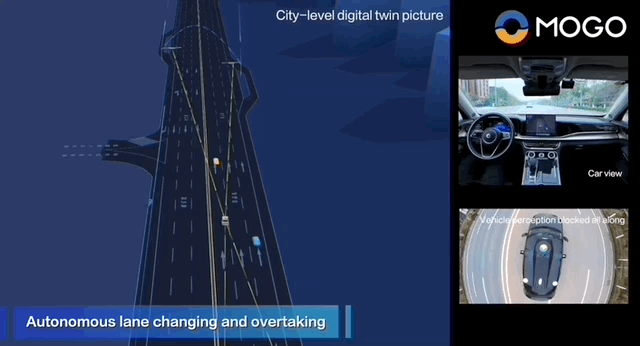
Additionally, at unprotected turns at intersections:
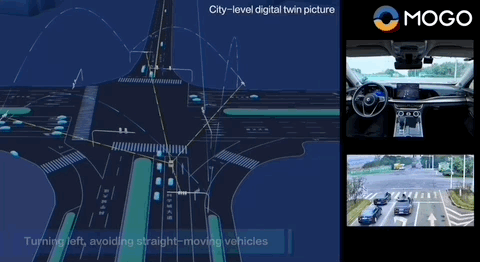
Without any active input from vehicle sensors, the roadside technology provides a greater volume of traffic data and meets the computational demands of AI algorithms, offering more extensive, richer, and timely data for safety and redundancy.
By controlling traffic flow in a specific area through a cloud-based system, it can maximize efficiency and reduce the occurrence of accidents.
This is why the video showcasing autonomous driving without relying on vehicle sensors, but solely using roadside technology, has gained significant attention overseas.
Breaking away from traditional autonomous driving technology routes, the impressive results also open up more dimensions for comparison and discussion.
What Kind of System Is This?
The video that has shocked the foreign tech community comes from Mogo Vehicle Network, a domestic autonomous driving technology company focusing on integrated vehicle-road-cloud solutions.
Their standardized product, called Mogo AI Digital Road Station 2.0, serves as the infrastructure for road digitization, capable of large-scale and rapid deployment on urban roads, highways, and scenic areas.
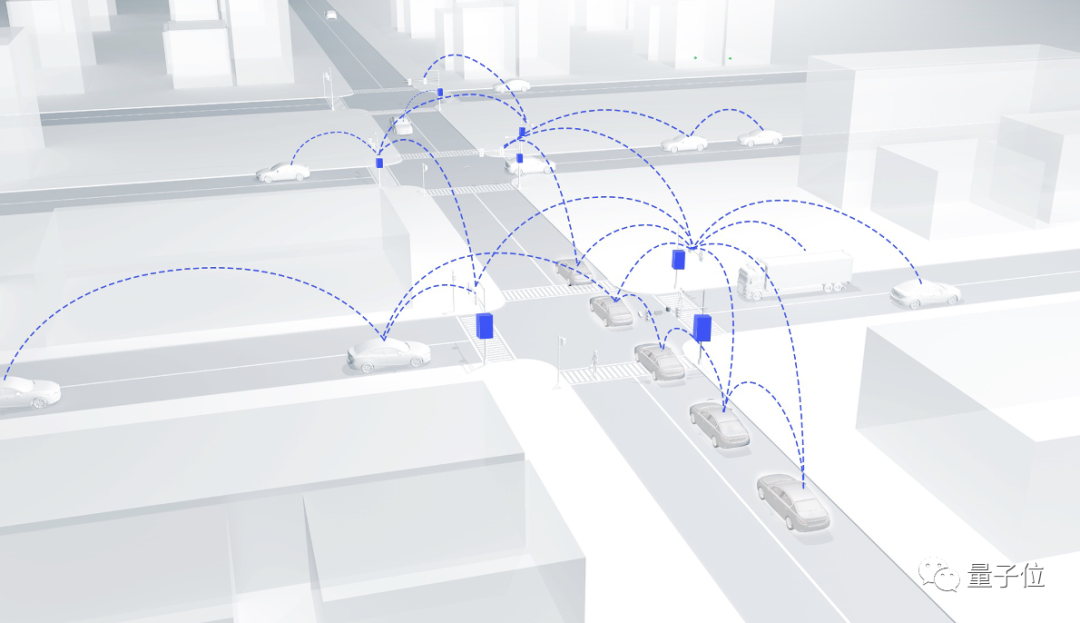 △ Urban Scene
△ Urban Scene
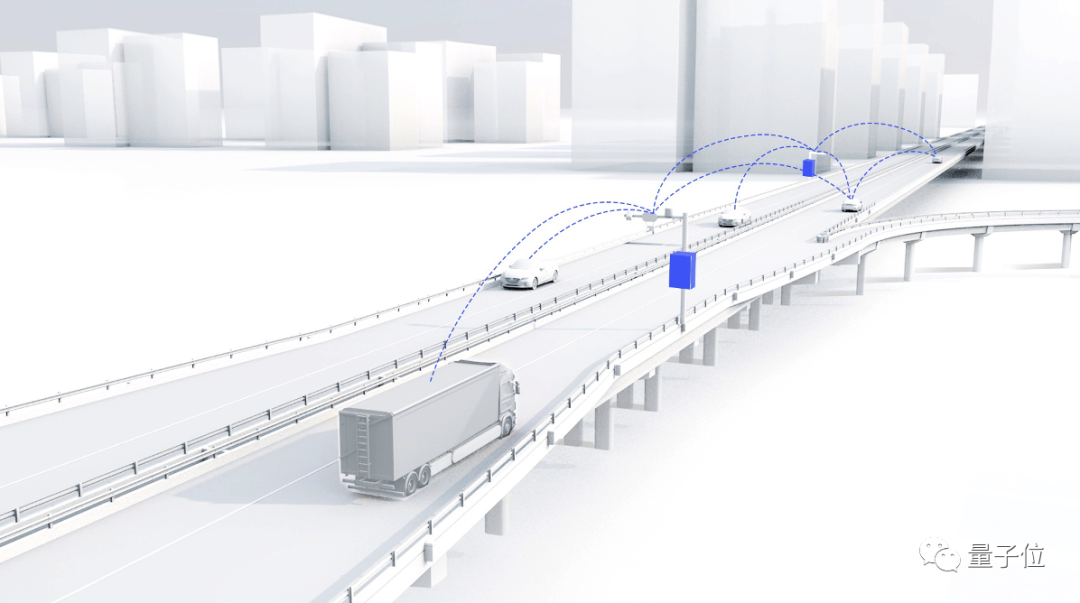
△ Highway Scene
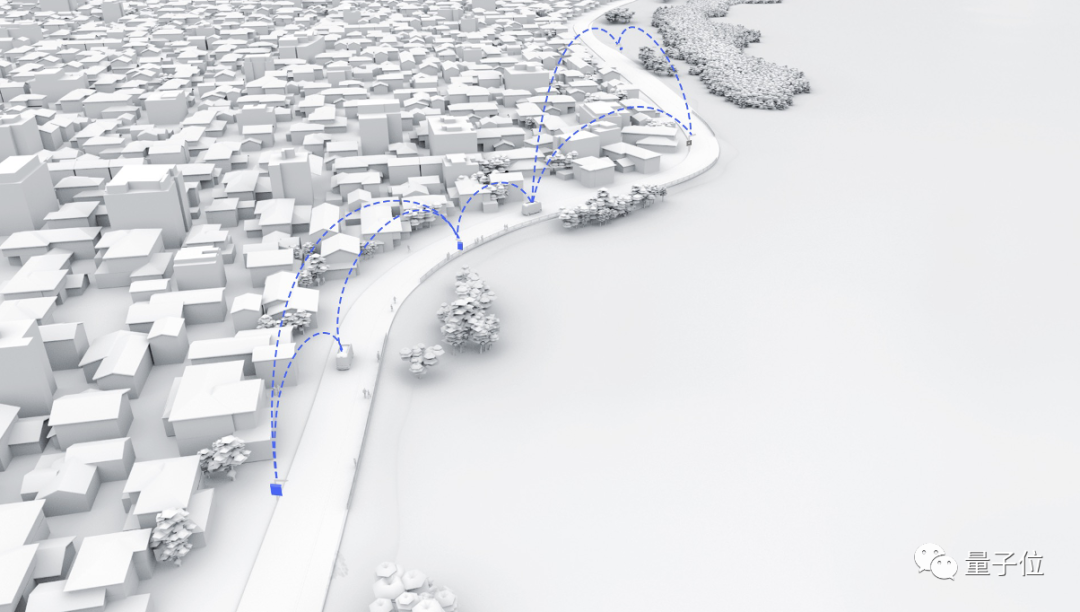 △ Scenic Road
△ Scenic Road
The 6-minute test route in the video is located on the main road in Hengyang, Hunan, crossing the city center. Mogo Vehicle Network has upgraded a 38-kilometer digital road here, deploying its self-developed AI digital road stations on a large scale.
The Mogo AI digital road station is actually a product that integrates hardware and software, including edge computing components (MEC), vehicle-road collaborative communication units (RSU), and various sensor components, running the self-developed intelligent road system on the MEC to achieve multi-modal perception fusion and V2X computing engine.
These can be deployed every few hundred meters on traffic signal poles, gantries, and other infrastructure, forming continuous, blind-spot-free perception coverage and providing continuous vehicle-road collaborative network coverage along the road.
In simple terms, sensors deployed through the stations obtain real-time road status, which is then computed by edge computing devices and communicated to vehicles via high-performance communication modules, allowing autonomous vehicles to execute specific actions.
Compared to the information collected solely by vehicle sensors, the Mogo AI digital road stations have a broader field of view and can predict traffic conditions several kilometers ahead, especially avoiding unexpected situations like “phantom vehicles.”
Currently, the 38-kilometer digital road in Hengyang processes an average of 46.2TB of data daily, analyzes 1.85 billion frames of perception data, identifies traffic participants 1.964 million times, issues traffic light status information 25.92 million times, computes V2X events 2.37 billion times, and facilitates 27.37 million vehicle-road interactions. Approximately 5,000 intelligent connected vehicles interact with the Mogo AI Digital Road Station 2.0 daily.
Moreover, the Mogo digital road station boasts strong data processing capabilities and ultra-low end-to-end latency. The total computing power along the 38 kilometers exceeds 10,000 TFlops, which is unattainable by a single vehicle. Additionally, the algorithms based on the integrated vehicle-road-cloud system enable timely and rapid decision-making for autonomous driving terminals, with system response times reaching under 100 milliseconds, three times faster than human reaction times.
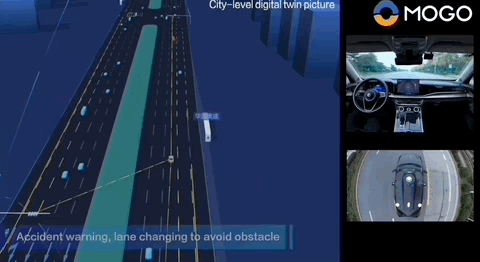
This digital road station not only supports L4 level autonomous driving but also empowers other L1-L3 vehicles within the area with data. Moreover, it is not limited to passenger cars; theoretically, all commercial vehicles and low-speed unmanned vehicles connected to the system can benefit from the station’s powerful data support and services.
As the construction of digital roads accelerates, the data obtained by digital stations will grow exponentially, feeding back into AI algorithms to make the system smarter, ultimately reducing traffic accidents and improving traffic conditions.
Mogo Vehicle Network’s approach is somewhat akin to ChatGPT; both address problems from the ground up. Autonomous driving, like many technologies, has historically underperformed due to a lack of sufficient data and computational power against a backdrop of converging algorithms.
The Mogo digital road station fundamentally resolves issues of data (“God’s view, super-distance, comprehensive information without blind spots”) and computational power (edge computing, vehicle computing, cloud computing overlapping to form an unprecedented supercomputer). A large number of stations generating massive data 24/7 will help the autonomous driving model achieve rapid iteration and evolution, potentially leading to unimaginable transformations in autonomous driving technology.
Another Possibility for Autonomous Driving in China
The reason this video has sparked heated discussions is not only due to Mogo Vehicle Network’s technical accumulation and the impressive “black technology” of its roadside products but also because this route for autonomous driving technology can almost only be realized in China, which has made many overseas peers envious.
Once systems like Mogo Vehicle Network are established, they provide comprehensive L1-L4 autonomous driving foundational services regardless of vehicle type or road segment.
This kind of large-scale V2X implementation is currently only feasible in China, where the digital road infrastructure is sufficiently developed, the market is large, and policies are proactive, giving it an advantage over foreign implementations.
After releasing the video showcasing roadside capabilities, Mogo Vehicle Network also published a video demonstrating single-vehicle autonomous driving, achieving L4 level autonomous driving capabilities on open urban roads.
The collaboration between vehicle and roadside systems provides redundancy, enhancing the overall reliability of autonomous driving.
Coupled with the cloud platform behind it, it truly realizes the “vehicle-road-cloud integration” that the country has long advocated.
Overseas tech influencers and media are astonished by Mogo Vehicle Network’s roadside technology, partly because Tesla’s single-vehicle intelligence, after years of advocacy by Musk, has almost become the only classic doctrine of autonomous driving. However, Mogo Vehicle Network has achieved L4 level autonomous driving on open urban roads using only the Mogo AI digital road station, demonstrating a more robust and reliable path for autonomous driving implementation with better overall economic benefits for society.
Moreover, they have tagged Musk and companies like Cruise and Waymo, implying a subtle message—
This method may not be achievable overseas.
— The End —
Click here👇 to follow me, and remember to star it!~
One-click triple connection: “Share,” “Like,” and “View”
Daily updates on cutting-edge technology advancements ~